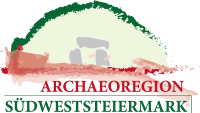In the Temple Museum Frauenberg, finds spanning 6,000 years are made accessible to the public. The listed museum building stands on the foundation walls of a Roman temple – the oldest free-standing masonry in Styria – in the middle of the former cult district of the city of Flavia Solva.
The exhibition shows sights of the cultic and cultural history of the mountain – archaeological finds from about 70 years of research work. In the picturesque open-air area and the Roman herb garden, extraordinary insights into our ancestors during the Celtic and Roman eras are possible.
April 1 – October 31
Mon. – Fri. 10.00 a.m. – 3.00 p.m. and weekend/holiday 10 a.m. – 5 p.m.
1 November – 31 March closed
Visiting during winter break and outside opening hours is possible at any time upon request.
Contact:
tempelmuseum@leibnitz.at
Am Frauenberg 9, A-8430 Leibnitz/Seggauberg
Among the archaeological sites in Austria, Frauenberg near Leibnitz plays a special role as a central site, cult site, sanctuary and settlement site of different epochs. The Temple Museum guards the archaeological heritage gathered in about 70 years of research and makes it accessible to the public by creating an atmosphere of remembering, experiencing and reflecting.
The Frauenberg is located about two kilometers west of the city of Leibnitz. It was already settled in the Stone Age by arable farmers of the region. In the time of the Celts it attained supraregional importance as a fortified seat of princes and religious center. In the Roman era it remained the most important cult area of the city of Flavia Solva down in the valley. On the hilltop, two monumental temples to Isis-Noreia and Mars-Latobius were built. However, from the earliest times, the center of worship was a mother goddess, who was probably worshipped as an emergency helper and protector. Today, the Marian pilgrimage church constitutes the religious center of the Frauenberg.
Archaeological excavations have been contributing to the reconstruction of the history of the Frauenberg since 1951. The oldest finds date back to the late Stone Age. Fortifications in the form of earthen ramparts still bear impressive witness to early settlements. In Celtic times, the Frauenberg evolved into a princely seat with the right to mint coins and gained supraregional importance as a cultic center. A sacrificial site containing the remains of sacrificed cattle, pigs and horses as well as coins and weapons was the center of religious practices. The cultic center reached its culmination in Roman times. In late antiquity, a retreat settlement was established on the Frauenberg, which included an extensive burial ground and an early Christian church. The most recent archaeological finds come from a depot pit, dug in late antiquity. Among other things, 17 statuettes of a nursing goddess and parts of a statue of Mercury were recovered, underlining the importance of the Frauenberg as a sacred mountain.
The Frauenberg Temple Museum is located on the hilltop of the Frauenberg right next to the Baroque pilgrimage church. It stands on the foundation walls of a Roman temple – the oldest free-standing masonry in Styria – in the middle of the former cult district of the city of Flavia Solva. This constellation is extraordinary and unique. It allows to illustrate a millennia-long cultic continuity, starting with a Celtic nurse goddess via the Roman Isis-Noreia to the Christian Holy Mary. In two exhibition rooms, finds from around 70 years of excavation activity at the Frauenberg are displayed, with the most recently discovered sensational finds being highlighted. Currently, these are the remains of a marble statue of Mercury, statuettes of a nursing mother goddess and two Celtic gold coins. The upper floor shows an overview of the 6000-year history of the Frauenberg from the Neolithic period to late antiquity and offers access to the former temple cella. The exhibited coins, grave goods and architectural parts of the early Christian churches construct a bridge of remembering, feeling and reflecting. The basement, the museum’s lapidarium, displays architectural parts of the former temple complexes, inscriptions, tombstones and statues. The spacious open-air area offers an impressive panoramic view with shaded seating, numerous inscription panels and reconstructions, a lookout with a view of Flavia Solva and a lovingly planted Roman herb garden.
The exhibition stimulates all the senses. It deals with the topic of nutrition in Roman antiquity in an everyday and cultic context. From literary sources we know about luxurious banquets of the Roman upper class: The name Lucullus still stands today as a symbol for a particularly pleasurable culinary lifestyle. The eating habits of the common Roman woman and the table manners of the common Roman are no less interesting. Food also played a central role among the offerings to goddesses and gods. Meat, bread and wine always had a prominent part in this. The pouring of wine at an altar was a frequent form of sacrifice, along with the offering of bread in the form of flatbread or a so-called sacrificial cake.
In the herb garden of the Temple Museum, numerous plants grow that were already used to refine food in Roman times. Visitors are invited to touch, smell and taste them.
A very particular highlight of the exhibition is the specially created Frauenberger Kultkeks (cult cookie). In collaboration with the Pokes Bakery and ceramist Margarethe Christian, the Temple Museum team has developed an edible piece to complement the exhibition. The recipe is a modern interpretation of the ancient sacrificial cake “libum”. The Frauenberg cult cookie will be available for sale in a sweet and a savory form in the museum store.
Further information in German under: https://www.tempelmuseum-frauenberg.at
Text: Gabriele Kleindienst, supplemented by Mag. Dr. Bernhard Schrettle

